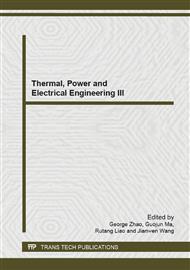p.1446
p.1450
p.1455
p.1460
p.1467
p.1473
p.1477
p.1483
p.1490
Electricity Competitiveness Evaluation Research Based on Principal Component Analysis
Abstract:
This paper constructs the evaluation index system of electricity competitiveness in terminal energy consumption, evaluates the electricity competitiveness in Ningxia region from 2005 to 2011 using principal component analysis (PCA), and compares the evaluation results of PCA, the linear weighted method, the comprehensive index method and TOPSIS-grey correlation method. The compatibility degree and difference degree of each method are analyzed and calculated to verify the applicability of the PCA. The results show that PCA is the most scientific and appropriate evaluation method.
Info:
Periodical:
Pages:
1467-1472
Citation:
Online since:
June 2014
Authors:
Keywords:
Price:
Сopyright:
© 2014 Trans Tech Publications Ltd. All Rights Reserved
Share:
Citation:


